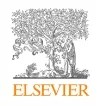JACI:過敏性疾病機理研究新進展
發(fā)布日期:2018-11-13
原標題:2017過敏性疾病機理研究新進展
延伸閱讀

JACI
DOI: 10.1016/j.jaci.2018.09.027
Abstract:
This review highlights advances in mechanisms of allergic disease, particularly type 2 innate lymphoid cells, TH2 lymphocytes, B cells, dendritic cells, microbiome and barrier function, eosinophils, and mast cells. During the last year, considerable progress has been made in the further characterization of type 2 inflammation controlled by both adaptive (TH2) and type 2 innate lymphoid effector cells. New pathways of lymphocyte activation, trafficking, and recruitment and effector cell mechanisms have been discovered. The plasticity of lymphocyte effector cell responses is another area in which major progress has been achieved. Accumulating evidence will influence both our understanding of allergic disease and our efforts for allergy prevention and treatment.
All Authors:
ChrysanthiSkevakiMD, PhDabHaraldRenzMDa


——來自浙大迪迅
本文綜述了過敏性疾病的發(fā)病機制,特別是2型先天淋巴樣細胞、TH2淋巴細胞、B細胞、樹突狀細胞、人體微生物組和屏障功能、嗜酸性粒細胞和肥大細胞方面的機理。在過去的一年里,在適應性(TH2)和2型先天淋巴樣效應細胞控制的2型炎癥的特征方面取得了相當大的進展。淋巴細胞活化、轉運、募集和效應細胞機制的新途徑已經被發(fā)現(xiàn)。淋巴細胞效應細胞應答的可塑性是另一個取得重大進展的領域。越來越多的證據將影響我們對過敏性疾病的理解以及我們預防和治療過敏的努力。延伸閱讀

JACI
[IF:13.1]
Advances in mechanisms of allergic disease in 2017DOI: 10.1016/j.jaci.2018.09.027
Abstract:
This review highlights advances in mechanisms of allergic disease, particularly type 2 innate lymphoid cells, TH2 lymphocytes, B cells, dendritic cells, microbiome and barrier function, eosinophils, and mast cells. During the last year, considerable progress has been made in the further characterization of type 2 inflammation controlled by both adaptive (TH2) and type 2 innate lymphoid effector cells. New pathways of lymphocyte activation, trafficking, and recruitment and effector cell mechanisms have been discovered. The plasticity of lymphocyte effector cell responses is another area in which major progress has been achieved. Accumulating evidence will influence both our understanding of allergic disease and our efforts for allergy prevention and treatment.
All Authors:
ChrysanthiSkevakiMD, PhDabHaraldRenzMDa
2018-10-24 Review
創(chuàng)建過敏性疾病的科研、科普知識交流平臺,為過敏患者提供專業(yè)診斷、治療、預防的共享平臺。

 杭州浙大迪迅生物基因工程有限公司
杭州浙大迪迅生物基因工程有限公司

